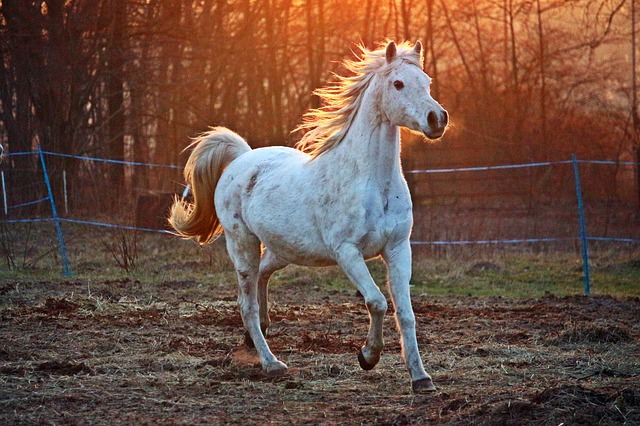
Sand in the Gut
Whinny’s Wisdoms

Hello again, fellow horse enthusiasts! It’s Whinny, your trusty and knowledgeable mouse guide to equine education. I’m here to provide you with some insights about managing sand colics. As a Florida mouse, I’ve heard a whole lot about sand and its propensity to cause GI upset in those giant, delicate horse guts, and I’ve recently scurried through the veterinary literature to gather more information for you.
Sand accumulation in the equine large colon can be as pesky as a mischievous mouse stealing crumbs. Sand gets in the equine large colon when horses graze on sandy pastures or consume feed or hay from the ground. Over time, this sand can build up in the colon, leading to potential digestive issues. The Docs here have seen colons holding as much as 50 pounds of sand! Horses with sand accumulation can have a range from no symptoms, to diarrhea, to colic symptoms.

We’ve all heard the best way to manage sand is to feed psyllium for 7 days once a month. Turns out psyllium is key, but the one week once monthly version doesn’t work. Don’t fret! There are treatments! First let’s learn more about how psyllium and magnesium sulphate (Epsom salts) work in the gut.
Psyllium, derived from the Plantago ovata plant, is like a fiber superhero, swooping in to promote smooth digestion. It has a high water-holding capacity and acts as a bulk laxative, promoting the movement of ingested material through the digestive tract. Magnesium sulphate, also known as Epsom salt, has osmotic properties. When administered orally or via nasogastric intubation, it draws water into the intestines, increasing fluid volume and facilitating intestinal motility.
The combination of psyllium and magnesium sulphate seems to have a synergistic effect in clearing sand accumulations. Psyllium’s bulk-forming properties help bind the sand particles, while magnesium sulphate’s osmotic effect aids in softening the feces and promoting their passage along the gastrointestinal tract. To get enough of it into the equine GI tract it has to be administered via a nasogastric tube. Studies found daily treatments for three consecutive days were key to clearing sand.
How’s a mouse to know if there’s sand in there? Many of you have put poop in water in a clear bag to see if sand settled to the bottom. Bad news: that only shows that sand is moving. There can be an entire beach-load of sand in there and that plastic bag test will come up clean. The same studies looking at treatments found x-rays of the abdomen were the best for finding sand, and ultrasound could also be used to look at intestinal wall thickness and motility which can be affected by sand.

An ounce of prevention is better than a pound of cure, and that’s true for sand as well! In fact, it may be the best “treatment” available. Providing horses with a clean and sand-free environment is crucial. Feeding hay in feeders or elevated platforms can help minimize sand ingestion. Feeding hay and grain over large rubber mats can also reduce sand intake. Making sure your horse has plenty of hay in their diet will help them move daily sand accumulations along. All horses should get a minimum of 2% of their body weight in roughage every day!
And don’t forget, your veterinarian is like a wise old mouse, ready to guide you on the best path for your beloved horses. They’ll create a personalized plan to keep those horses healthy, happy, and prancing like little mice on a mission!
I hope these additional tidbits have shed some light on the topic of sand accumulations in horses and the use of psyllium and magnesium sulphate as a treatment option. If you have any more questions, feel free to ask. Until next time, stay curious and keep your equine friends happy and healthy!
~ Whinny
P.S. Are you subscribed to my blog? Don’t rely on Facebook to deliver it! If you put your email address in the big purple box below, I’ll send you my blog on Mondays, a day before everyone else! And it will always arrive in your inbox, no chance of missing it on Facebook. I promise I won’t spam you, I’ll just email you the blog every week. Just scroll down another inch. Good human, you can do it!
 Whinny’s Wisdoms is the official blog of Whinny the Clinic Mouse at Springhill Equine Veterinary Clinic in Newberry, Florida. If you liked this blog, please subscribe below, and share it with your friends on social media! For more information, please call us at (352) 472-1620, visit our website at SpringhillEquine.com, or follow us on Facebook!
Whinny’s Wisdoms is the official blog of Whinny the Clinic Mouse at Springhill Equine Veterinary Clinic in Newberry, Florida. If you liked this blog, please subscribe below, and share it with your friends on social media! For more information, please call us at (352) 472-1620, visit our website at SpringhillEquine.com, or follow us on Facebook!









You must be logged in to post a comment.